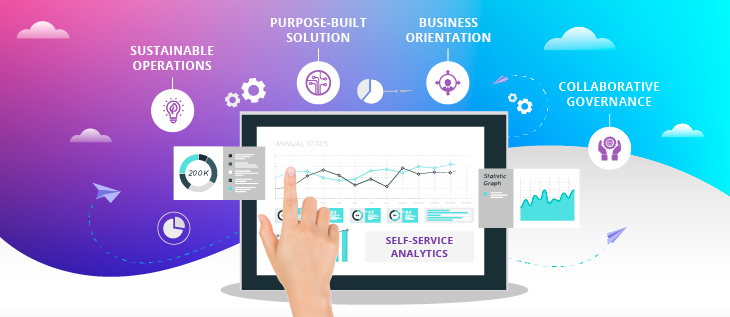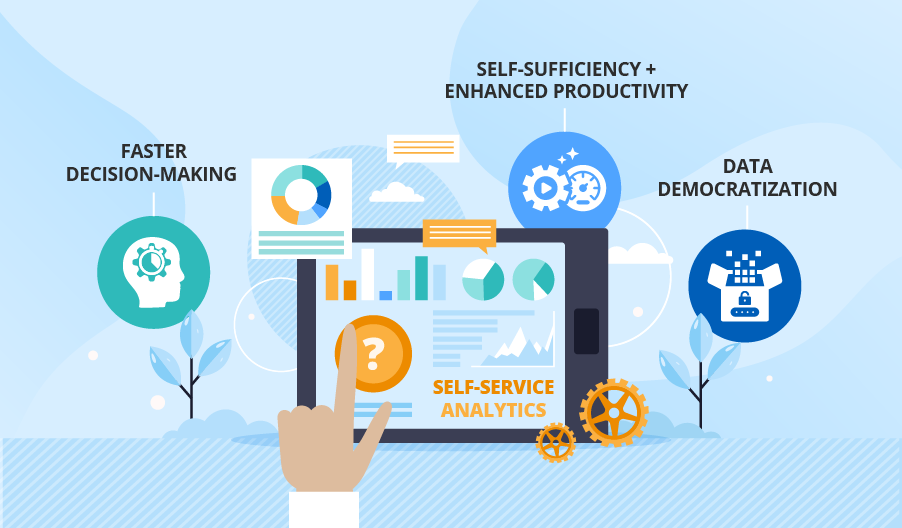The way organizations embrace self-service analytics to help them enables their sales and marketing professionals to be more competent and data-driven. Self-service analytics tools encourage business professionals to generate queries and reports on their own, enabling them to have potential insights without depending on a data scientist to do that.
Data and analytics leaders are increasingly adopting self-service analytics to support a data-driven culture within their organizations. This means that business users can learn to use analytics more easily, and they can benefit from effective BI tools, which in turn drive favorable business outcomes in the process.

Four areas to build a strong foundation for self-service analytics (Recommendations by Gartner);
- ALIGN SELF-SERVICE INITIATIVES WITH ORGANISATIONAL GOALS AND CAPTURE ANECDOTES ABOUT MEASURABLE, SUCCESSFUL USE CASES; get the good outcomes for the organization, it is crucial to confirm the value of the self-service approach in analytics and communicating its impact and likely successes. This also builds confidence and justifies the continued support for it. Furthermore, self-service analytics encourages business users to practice it to support their organization’s various areas on their own.
- INVOLVE BUSINESS USERS WITH DESIGNING, DEVELOPING, AND SUPPORTING SELF-SERVICE; trust can be preserved between It teams and business users when executing a self-service initiative successfully. Forging trust by long-term collaboration can result in long-term self-service success.
Download our ebooks
Get directly to your inbox
- TAKE A FLEXIBLE, LIGHT APPROACH TO DATA GOVERNANCE; the success of the self-service initiative depends largely on its data and governance model’s flexibility which should be enough to enable and support the free-form exploration of self-service users.
- EQUIP BUSINESS USERS FOR SELF-SERVICE ANALYTICS SUCCESS BY DEVELOPING AN ONBOARDING PLAN; analytics leaders must support enthusiastic business users in guiding them carefully on how to use new tools for their specific business problems. An onboarding plan can help them automate and standardize this process by making it far more effective to use self-service analytics throughout the organization.
Conclusion
Above mentioned four areas would help you to achieve self-service analytics success. You can also take an expert’s advice on this. iSmile Technologies offers their clients tools and strategies to ensure successful self-service analytics.








